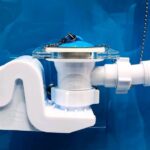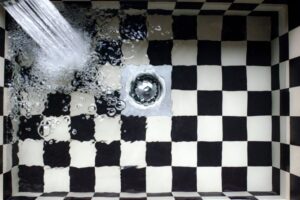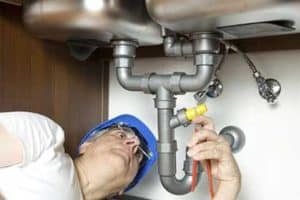People do not usually use drum traps in modern houses. If you live in an older home, or if you’re planning to buy a house with a drum trap, this article is for you.
In plumbing, a drum trap refers to a cylindrical trap usually used at bathtubs or beneath a bathroom floor. This cylindrical plumbing trap has a vertical centerline and a cover plate to unscrew for access.
Read on to get more in-depth information about drum traps, including why it’s no longer allowed, how to clean them, and whether it’s legal or illegal.
What Is a Drum Trap?
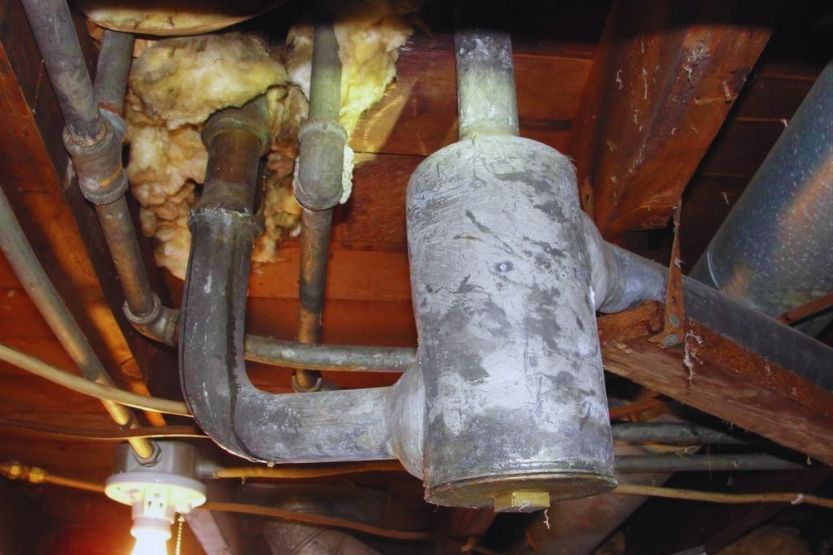
Available in Different Designs, Shapes, and Sizes
Drum traps have different designs, shapes, and sizes. Most of them look like a 2-pound coffee can with two pipes at opposite ends. You’ll only see the wide-access cap when installed while the inlet at the bottom connects to the pipe system. Manufacturers made them from cast iron or lead.
Drum Traps Don’t Have Vents
Unlike P-traps, drum traps don’t have vents. Plumbing traps require to have a vent to protect water seals from damage. With a damaged seal, toxic gases and foul sewer odors could leak inside your house and cause a serious health problem.
Common to Old Houses
Like those built in the 1920s to 1950s, many older houses have this old style of plumbing trap. People used drum traps in bathtubs, kitchen sinks, and laundry areas.
How Drum Trap Works
Water from your bathtub or sink drain pipe flows into the drum trap from the bottom and then fills the vessel with wastewater. Before flowing out at the top, a plug of sewage stays in the low bend in the drum trap to create a seal that prevents potentially harmful and bad-smelling sewer gases from leaking into your bathroom.
Pros and Cons of Drum Traps
Pros
1. For Homeowners Who Want to Remain Loyal to a House’s Original Design
The P-trap is the most common type of plumbing trap in houses today. However, there are still homeowners who might prefer a drum trap to a P-trap, especially if they want to remain loyal to the original construction design of an older home or their plumbing system is near to the floor.
2. Prevents Sewer Gas from Seeping Into a House
A drum trap performs two essential functions, including holding a large volume of water to prevent sewer gas from seeping into your house.
3. Prevents Clogging in the Water Pipes
It also prevents large items from going into the water pipes, where they can cause obstructions.
Cons
1. Drum Trap Is Not Self-cleaning
If you look inside a P-trap, you’ll notice that it’s generally clean. This is because it’s self-cleaning or self-scouring. Meaning whenever you pull your bathtub or sink plug, the wastewater scours the trap’s inside then wash the solids away. Therefore, a P-trap seldom clogs up.
On the other hand, a drum trap isn’t self-cleaning. The canister of a drum trap holds so much wastewater that solids tend to settle and accumulate in the bottom. This is one of the main reasons it’s prone to clogging.
2. Tough to Clean and Unclog
Another issue with a drum trap is it’s tough to clean and unclog. Although the cover is removable, the drum trap’s location makes it challenging to access the lid. You might need to cut out the floor to get to the lid in some cases.
3. Risk of Collapsing
Even if you can access the cover, it’s still nearly impossible to remove due to the corroded threads. And if your drum trap is made from lead, which is a soft and easily pierced material, there’s a risk it could collapse in on itself if you crank it too hard.
Important reminder: If the cover of your drum trap is easy to remove, make sure that it creates a tight seal. Otherwise, sewer gas could come inside your house.
Are Drum Traps Legal?

Why Is a Drum Trap Illegal in Some States?
Today, drum traps are still available; because many old homes use this type of plumbing trap. Therefore, they’re not precisely obsolete. But based on plumbing codes of various states in the United States, authorities do not allow its use in modern houses because of a couple of reasons:
- Its inner surface is not smooth flowing.
- Clogs more easily. Also, it is difficult to unclog.
- Drum trap is not self-scouring unlike P-traps.
Plumbing Trap Codes
I highly encourage you to research the plumbing code of your country or state regarding the usage and replacement of drum traps:
Minnesota
The “Minnesota State Plumbing Code (4715.0200, “s”)”: “Each fixture shall be provided with a separate, accessible, self-scouring, reliable trap placed as near to the fixture as possible.”
The Minnesota State Plumbing Code (Section 1004.1 ): “Drum and bottle traps shall be installed for special conditions.”
The Minnesota State Plumbing Code (Section 4715.0960): “Drum traps shall only be installed when permitted by the administrative authority for special conditions (laboratory tables, dental chairs, etc.).”
Florida
The Florida Plumbing Code (FPC-1002.2): “Fixture traps shall be self-scouring. Fixture traps shall not have interior partitions, except where such traps are integral with the fixture or where such traps are constructed of an approved material that is resistant to corrosion and degradation. Slip joints shall be made with an approved elastomeric gasket and shall be installed only on the trap inlet, trap outlet, and within the trap seal.”
The Florida Plumbing Code (FPC-1002.3): “Exception: Drum traps used as solids interceptors and drum traps serving chemical waste systems shall not be prohibited.”
Again, what is a drum trap? A drum trap’s function is to catch the debris and prevent toxic fumes from reaching your home. Make sure you regularly clean your home’s drum trap. Also, check whether it has a rusted cover.
How Do You Clean and Unclog a Drum Trap?
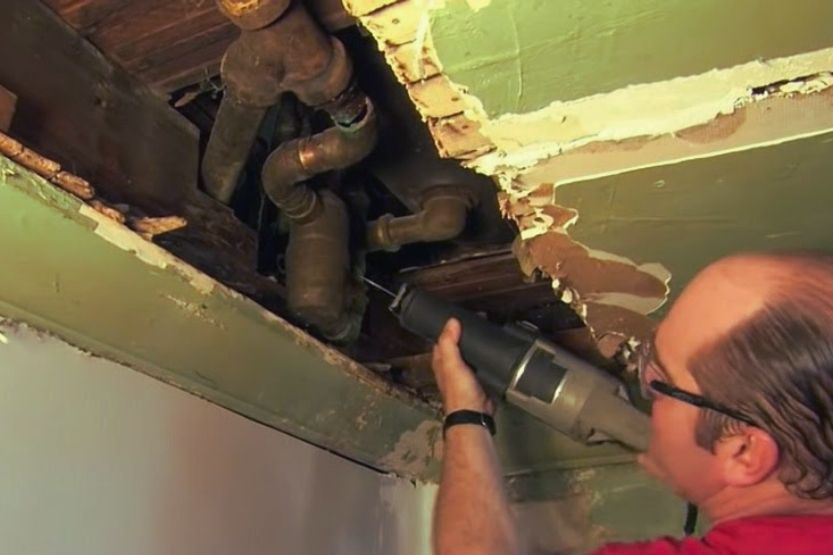
How Often Should You Clean Your Drum Trap?
The advice of most plumbing experts is to clean your plumbing trap at least four times every year. But if many people live in your home—like six or more—the recommendation is to do it every month as a preventive measure against clogging and limit residue buildup.
Since the pipe feeding sits below the pipe draining, a drum trap requires regular and manual cleaning. There’s no compromise for this because, as I’ve mentioned, a drum trap is prone to clogs. Luckily, you don’t always need to hire a plumber to do the cleaning for you.
Note that clogged drum traps are a pain in the neck to fix. You need to have amazing strength to open a lead drum trap. And once you open it, you may find it difficult to clean.
Because it’s illegal and difficult to service, maybe it’s time to bite the bullet and replace it with a self-cleaning and heavy-duty P-trap. In the meantime, below are the basic steps for cleaning and unclogging a drum trap:
1. Look for the Drum Trap
In some drum traps, the cover is removable. However, other drum traps are typically found near the drain hole and underneath the floor. This makes it harder to access the trap without cutting sections of the floor.
2. Locate the Central Nut
The threaded cover, which may or may not be visible, has a central nut or grip tip. Feel the top end portion of the cover to locate this central nut. Once you find it, use an adjustable wrench to turn the central nut counterclockwise.
If the cover doesn’t budge, you can apply an adequate amount of lubricant spray around it. Wait at least 15 minutes before trying to loosen it again. If it still doesn’t budge, repeat this process until you remove it.
3. Inspect the Rubber Gasket
While removing the cover, you’ll notice it has a rubber gasket. Inspect it. If it’s worn out or brittle, replace it.
You’ll also see two pipes found on each side of your drum trap. One pipe is usually placed higher than the other. The higher pipe connects to the drain, while the lower pipe connects to your bathtub. Because of the design and location of the pipes, water won’t flow back to your bathtub. And as a result, it creates a reliable water seal.
4. Clean the Drum Trap
Now, it’s time to clean the drum trap. You don’t need expensive equipment for this purpose. Reach down the drainpipe with your hand to remove all of the objects accumulated in the trap.
Use a Rubber Gloves, a Pair of Needle-nose Pliers or An Old Teaspoon
But if you’re squeamish, you can wear rubber gloves and use a pair of needle-nose pliers or an old teaspoon. Then, run your bathtub’s hot water for a few minutes to loosen and clear the remaining debris.
Use a Plunger
If using the needle-nose pliers or old teaspoon doesn’t pull out all the dirt in the drum trap, you could try using a plunger:
- There should be at least two or three inches of standing water around the opening of the drain, and then firmly place your plunger’s cup over it.
- Perform several light pulls (around three to 12 times) before completely pulling it out of the drain.
- Repeat this process until your drum trap is free of dirt, hair, and other materials that may cause blockage.
Use a Chemical Drain Cleaner
You can use Drano, but it may be too corrosive for your drains. Try pouring a good amount of vinegar, liquid dish detergent, hot water, or salt and hot water to dissolve or loosen materials that are narrowing the pipes. Leave the solution overnight.
5. Open the Faucet
After you’ve removed the debris in the trap, open the faucet. Check whether the water flows continuously. If not, then you have a clogged pipe.
Run a Drain Snake
Many people suggest eliminating the drum trap and replacing it with a P-trap. But if you’re afraid that would create more problems that you’re not yet ready to deal with; you could try running a drain snake through your drum trap:
- Drill a 2-inch hole into the top of the drum trap cylinder. Alternatively, you could just cut the top off, which will only take around two minutes or less.
- Run your drain snake through the pipes. Just a heads up—poop might fling around the room as your snake drain starts spinning. Wear a mask and protective clothing before beginning the job.
- After you’ve cleared the drain pipe, your next challenge is to put the cap on top of the open drain pipe. Since you already cut off the old cap, you can use a heavy-duty rubber test cap that approximately fits your drum trap to create a temporary seal.
If the following strategies don’t help, get a professional plumber to do the job for you. Make sure to hire a licensed, insured professional plumber from an established plumbing company.
Conclusion: Drum Trap – What Is It?
A drum trap is a plumbing trap commonly found in older homes. It has a cylindrical vessel, which resembles a coffee can, and two pipes on each end; one is situated lower than the other. For some drum traps, the cover plate could be unscrewed for access.
Drum traps perform almost the same functions as other types of plumbing traps. However, the main problem with them is they’re prone to clogging. They’re also notorious for being difficult to clean and repair. Therefore, the popular recommendation is to replace them as much as possible with a self-cleaning P-trap.
So, before buying an old-style house, be sure to check your state’s plumbing codes to determine if it’s still legal to use a drum trap. Get a professional plumber to regularly check and clean your drum trap to prevent future clogs and other issues.

